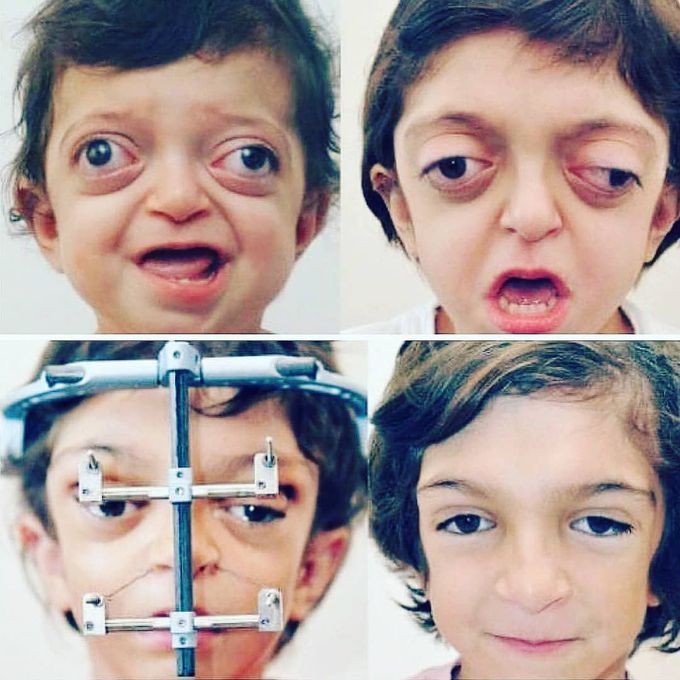


Crouzon syndrome
Crouzon Syndrome is characterised by multiple early synostosis of the sutures of the skull and face that derives its characteristic appearance. Crouzon syndrome is caused by multiple mutations in the FGFR 2 gene, which can be inherited from parents or are new mutations. The incidence of this syndrome is approximately 1:60,000 births. Characteristics Brachycephaly (short anteroposterior dimension of the head) Facial hypoplasia Exophthalmos that could lead, in severe cases, the eyelids not to close Increased distance between the eyes (hypertelorism) usually in a non-serious degree. The clinical picture varies from lighter form (which can elude diagnosis) to serious, incompatible with life. Surgical repair Because there is almost always a limitation of the capacity of the skull and the brain undergoes pressure, in infancy this pressure must be relieved with expansion (growth) of the cranial cavity. Usually the initial surgery is performed in the back area of the skull in parietal and occipital area (Parietal Decompression). A few months later (if necessary) decompression in anterior part of the skull follows (fronto-orbital advancement). In this intervention the area of ocular conches is formed and exophthalmos is somewhat reduced. Finally, at the age of 10-12 years complete and permanent correction of the deformity and the functional problems are achieved by transferring the anterior part of the skull and face forward with Distraction Osteogenesis (fronto–orbital advancement). This operation can be done at an earlier age, if necessary, due to functional probl
Unique and rare disorder and a applause to the dr. The way he managed..and give a new life to kid....also feeling amazed to have a new knowledge about new disorder and its treatment 👏
Facial hypoplasia is like one expression or no expression staying on face called mannequin syndrome

